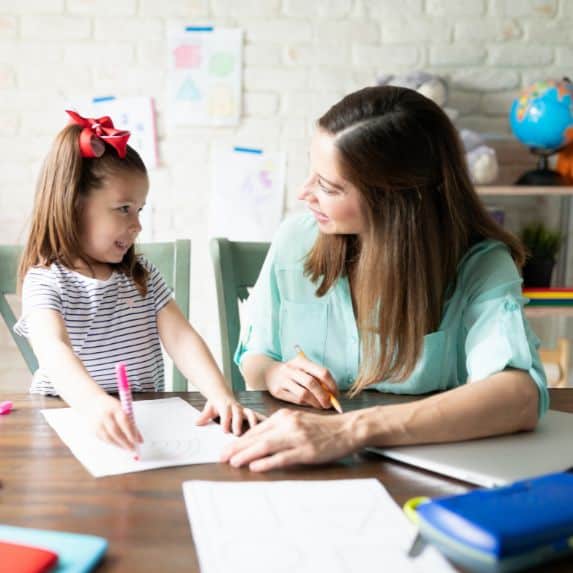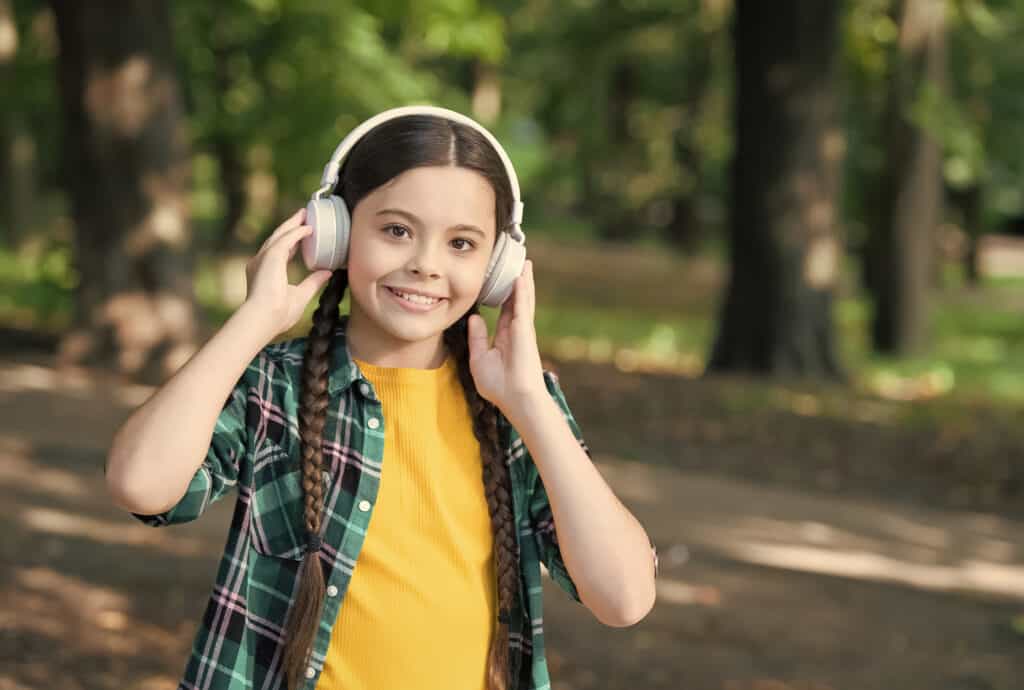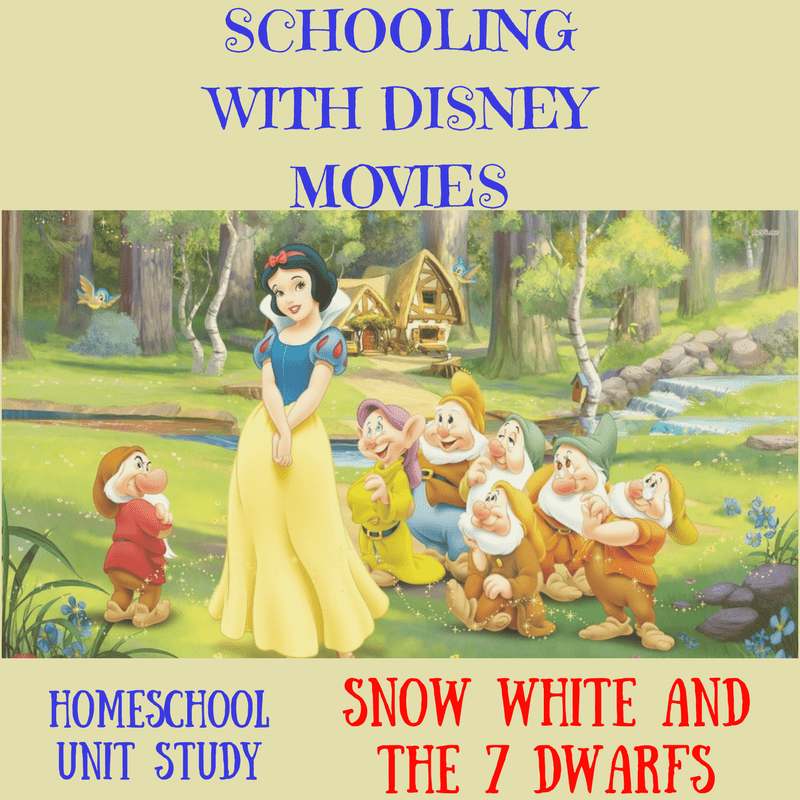How to Identify your child’s learning styles
As a homeschooling parent, you must provide your child with the education they need to be successful in life. If you want to help your child learn efficiently, it helps to know their preferred learning style. According to Neil Flemming’s VARK model, there are four learning styles—visual, auditory, read/write, and kinesthetic. Typically, a child will prefer one of these styles over the others, and they will learn more productively when taught that way. We’ll characterize each type below to help you pinpoint the learning style that best suits your child. When homeschooling, it is essential for you to figure out the learning style before you invest in curriculum.
Your child’s learning style means this is the best way they will learn when presented with new information. However, that doesn’t mean they can’t learn by another method. If your child is struggling, it may be easier to change the curriculum or how you present the information to them to best line up with their main learning styles.
Be aware that sometimes figuring out learning styles and learning disabilities needs professional guidance. For a comprehensive evaluation of learning issues, consider the Woodcock-Johnson Test.

The Four Different Learning Styles:
Visual Learning Style:
About 65% of the population are visual learners. Children who prefer this style learn best by looking at visual aids, such as pictures, maps, and graphs. These learners need a visual representation to break down information. Reading and seeing pictures are important. Some of these individuals can see entire pages in their heads. Signs your child is a visual learner include:
- May use the words, “Let me see” or “I see what you mean.” May also use phrases such as “Picture this.” Other phrases include, “Guess what I saw today.”
- Shows keen observation skills and pays close attention to visual details.
- Finds it easier to remember information when you present it visually rather than through verbal explanations alone.
- Enjoys activities that involve drawing, sketching, or using colors to express ideas or concepts.
- Tends to create mental images to better comprehend and recall information.
- Usually a good speller
- May forget oral directions and needs you to repeat them, or have a map drawn out.
- May prefer to watch a video
- Wants to hold the book to see it themselves.
- Has a hard time remembering things you talked about.
What do Visual Learners Struggle With?
Visual learners often get distracted by things going on around them. A traditional classroom can be difficult for a visual learner because of all the other students moving, writing, windows to look out, and more. Has a particularly hard time during lectures that do not involve graphics or notes on a board. They may also struggle with reading comprehension or math word problems. Reading silently may pose a problem. Additionally, if there is a lot of visual distraction in a room (colors don’t match, too much clutter), they may get agitated. These children may be diagnosed with ADHD because they get distracted easily.
Ways you can help your visual learner:
In a classroom setting, you can seat them in the front of the room, so they don’t get distracted by other people around them.
Additionally, seat the visual learner away from the distractions of windows where they can see birds, trees, and cars driving down the road.
Allow the visual learner to draw pictures while you read aloud.
Encourage note-taking or drawing a visual diagram of the information.
To-do lists benefit these children (and adults).
Visual learners may have trouble remembering people’s names in group settings. The use of nametags help these individuals.

Auditory Learner
Approximately 30 percent of the population are auditory learners. Auditory learners prefer to learn through spoken word and conversations. Movies, music, presentations, lectures, and debates are some examples of mediums that strongly resonate with their learning style. Verbal learners seem to need to talk things through. Signs that point to your child being an auditory learner include:
- May says phrases such as, “I didn’t hear what you said,” or “Can you repeat that?” Other phrases include: “Le me tell you…” or “Listen to this.”
- Enjoys talking. This is the child that you say, “They never shut up.”
- Has good listening skills and can follow verbal instructions accurately.
- Demonstrates an ability to remember information by repeating it aloud or discussing it with others.
- Enjoys participating in discussions, debates, or oral presentations. For this reason, they make great attorneys and teachers.
- Tends to remember information better when you present it in an auditory format, such as through music or podcasts.
What Do Auditory Learners Struggle With?
Background noise can be distracting to an auditory learner.
May need things repeated if there are background noises. You may hear them say, “Can you repeat that?”
May have problems with written instructions.
Maps and diagrams can be confusing.
Ways you can help your Auditory Learner
Eliminate background noises. Provide a quiet place to learn.
Allow the use of headphones.
These learners may like to watch YouTube videos to learn how to accomplish a task or fix something.
These students generally love music.
Allow your child to talk out a problem. Sometimes hearing the problem allows them to figure out a solution.
Group discussions are great for these social learners.
Ask questions and allow student to answer verbally.
Read/Write Learning Style
If your child has the read/write learning style, they’ll thrive when you provide them with written materials, such as textbooks, articles, notes, and worksheets. Your child with the read/write style typically:
- Enjoys reading books, articles, and written materials to gather knowledge and learn new concepts.
- Demonstrates strong reading comprehension skills and can easily extract and process information from written texts.
- Engages in note-taking and organizing information through writing, making lists, or creating outlines.
- Benefits from activities that involve writing, such as summarizing information, creating written reports, or participating in written discussions.
- These children may grow up and become journalists or work in marketing.

What Do Read/Write Learners Struggle With?
Lectures without written notes or books.
Paying attention in church.
Group discussions can cause anxiety because they cannot control the flow of information.
Ways you can help your Read/Write Learner
Give them plenty of books, access to libraries, and paper and pencil.
These learners may love to keep a diary and write things down.
Buy a dictionary (or several).
Needs to read captions when watching videos and movies.
Kinesthetic Learners
About five percent of the population are kinesthetic learners. The kinesthetic learning style seems more common among young children, and they may become “labeled” as kinesthetic learners because most children are active. However, as they begin to get a little older, their true learning style may emerge. Kinesthetic learners are also called tactile learners, and it is also called multi-sensory learning. These children have a preference for hands-on activities, physical movement, and interactive experiences. Often these children need to hear or see something and then try it out on their own or they need hands-on experiences. To know if your child is a kinesthetic learner, look for these signs:
- May say phrases such as “I get it,” or “Let me show you.” They may say, “Let me see” when they mean, “Let me hold.”
- These children may smell everything, or put everything in their mouth.
- You may find these children to touch everything in sight. These are the kids you are constantly saying, “Quit touching.”
- Tends to fidget or have difficulty sitting still for extended periods of time during learning activities.
- Learns best when actively engaged in tasks that involve physical manipulation or interaction with objects.
- Benefits from using manipulatives, models, or real-life examples to understand and internalize abstract concepts.
- Excels in subjects or activities that involve physical coordination, such as sports, arts and crafts, or experiments.

What Do Kinesthetic Learners Struggle With?
These children struggle with sitting still for longer periods of time. Often they get labeled as have behavior problems or ADHD. This particular learning style in young children may mean constant motion. These children are easily distracted.
Furthermore, children may struggle with reading because it doesn’t involve a lot of movement.
Ways You Can Help Your Kinesthetic Learner
Take a hands-on approach to your child’s learning.
Enable them to have a lot of different learning experiences. Field trips, outings, visits to the park, and just being out in the world where they can have experiences.
Conduct “experiments” where they can smell, touch, or taste.
Use felt story boards.
Experiment in the kitchen.
Make sure to incorporate a lot of physical activities. Enroll these children in sports, gymnastics, dance or swim lessons.
If working on reading or writing, take frequent breaks to allow the child to move.
Provide building sets such as Legos, blocks, clay, and lots of texture in their lives.
Now that you know about the four learning styles, you can observe your child to figure out which type suits them best.
While there are 4 main learning styles, most people have a main learning style and a secondary learning style. There are also subsets of learning styles. There are logical learners, social learners (which may be verbal), solitary learners, and nature learners. As researchers continue to examine how we learn best, they will continue to expand learning styles.
So, once you determine your child’s learning style, what should you do next? If you’re teaching your child hands-on, it’s important to adjust your pedagogical approach to suit their preferred learning style. Or, if you’re using homeschool tutors, ensure they know about your child’s preferences so they can tailor their instruction accordingly.
Make sure your lesson plans and curriculum incorporate your child’s learning styles.
By aligning your child’s educational experience with their learning style, you can enhance their understanding and overall academic success.
Finally, did you know that not only do you have a learning style, but you have a teaching style? Adapting to your child’s learning style may take a little learning on your end. But the good news is that armed with the right information, you and your children will find learning a delight.
What type of learner are you?
10 Tips for Stress-Free Homeschooling

Reviewing movies for parents from a Christian perspective since 2005. Know Before You Go!
Christian Homeschooling mom – 30 years and counting
Autism Mom & Disney enthusiast
